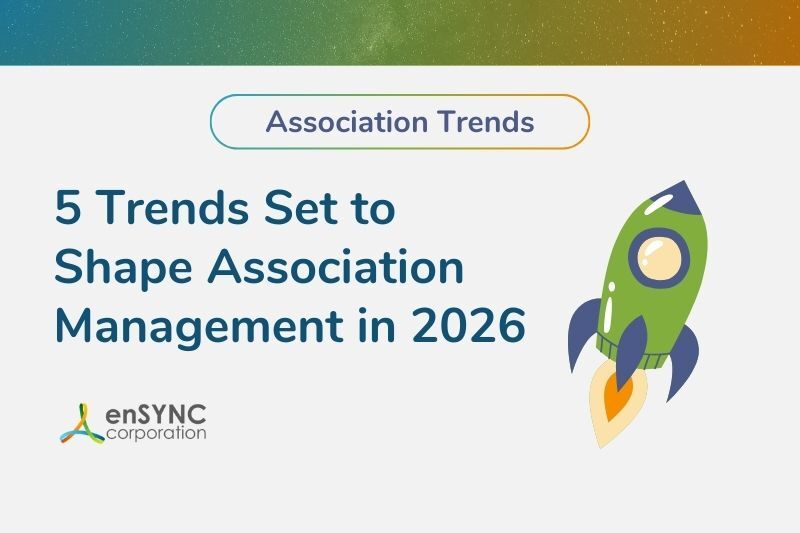Technology & digital transformation | Software solutions | Nonprofits
Integrated Nonprofit Software: A Step Towards Digital Transformation
March 12, 2021
|
The digital transformation of business continues to charge forward at record speed, providing solutions to the needs of both companies and consumers along with reduced costs and improved efficiency. Nonprofits can significantly benefit from a digital transformation through innovative technology that allows them to stretch every dollar while improving services to the communities they serve.
What does digital transformation for nonprofits look like?
All nonprofits are unique, and their resulting transformations will look different. Despite the inevitable variability between organizations, some common fundamental characteristics remain across all organizations; they can include:
Cloud-Based Services
Evolving to a cloud-based infrastructure is an essential component of the digital transformation. This involves making services, applications and resources available to employees on demand via the internet from centralized servers. Benefits include increased capacity and enhanced functionality, along with the ability to add additional services on demand without additional infrastructure costs.
Evolving to a cloud-based infrastructure is an essential component of the digital transformation.
Data-Driven Decision Making
Artificial intelligence and machine learning technologies have spurred significant advances in data collection techniques that provide granular insights into an organizations’ activities, along with improving the consumer experience. Data analytics is especially essential for nonprofits seeking to maximize the use of funds and provides critical information for decision-making across all departments of the organization.
Enhanced Collaboration
Digital transformation involves upgrading to a cloud-based infrastructure that will increase connectivity between employees and stakeholders - even if they work remotely. Allowing all credentialed individuals to access these shared systems ensures that everyone can collaborate and work together towards a shared vision with increased productivity and efficiency.
Redefined Corporate Structures
Increased collaboration between departments will make way for work environments where employees can easily contribute ideas that enhance the decision-making process. The resulting changes will gradually allow organizations to evolve from traditional employee hierarchies to structures that emphasize group involvement at every level of the organization.
Technologies that make digital transformation possible
Historical economic revolutions harnessed the power of steam, electricity and computers.
Today’s digital revolution leverages the power of connection through the internet to collect, analyze and use data to efficiently conduct business operations.
Some of the technologies that have evolved to power the digital revolution include:
Internet of Things (IOT)
IOT is a term used to capture the use of devices that obtain data and share it across a broad range of systems. This includes the use of “smart” devices and wearable technology that capture data and feed it into applications that monitor, assess and diagnose potential issues.
IOT (Internet of Things): a term used to capture the use of devices that obtain data and share it across a broad range of systems.
Along with aiding providers in providing services, IOT helps organizations monitor their activities by providing real-time data that can aid decision-making and refine long-term strategies. Current use cases of interest to nonprofits include tracking carbon emissions, water, food waste, energy consumption, and improving safety.
Artificial Intelligence (AI) & Machine Learning (ML)
AI and ML broadly define concepts that describe “intelligence” in machines that allows them to “learn” from the data captured by applications using this technology. Applications of AI & ML are growing across all sectors, and specific uses for nonprofits can include hiring staff, automating tasks and obtaining insights that improve fundraising initiatives.
Blockchain Technology
Blockchain technology is generally used to describe a database distributed across several computers that consists of cryptographically-secured “blocks” of data that are linked or “chained” together. Use cases for blockchain have evolved dramatically since its inception, allowing nonprofits to leverage this technology to facilitate donations across borders instantly and without fees.
Technology can help nonprofits overcome new challenges
The National Council of Nonprofits has identified three top trends that will affect nonprofits. These include limited resources, a growing demand for services, and the increased need to spread awareness of the organization’s activities.
Integrated cloud-based accounting software can help nonprofits offset reduced revenues by increasing efficiency and reducing costs. With the economy continuing its current downward trend, nonprofits can streamline their operations so precious dollars can be used towards providing services to the communities they serve.
Technological solutions can also help organizations prevent cyberattacks and “phishing” - the practice of impersonating reputable organizations in email messages designed to obtain sensitive financial information. Growing awareness, employee training and moving to secure cloud-based solutions can ensure enhanced data privacy and increased security in the long term.
Digital transformation benefits nonprofit organizations
Besides helping nonprofits address growing challenges, adopting new technology brings multiple benefits that include:
1. Easy and seamless integration with existing systems
Cloud-based accounting software can be seamlessly integrated into existing systems through an open application programming interface (API) that can allow all systems to communicate with each other. That means that all parts of the organization - from donation management to payroll - can access the same data for streamlined integration that allows managers to keep track of the entire organization.
2. Reduced costs
An investment in software can pay multiple future dividends through improved efficiency. Time-consuming tasks such as filling in forms and processing multi-currency transactions can be simplified and automated to save time and reduce costs. Innovative tools allow managers to produce near real-time reports with ease and efficiency, giving them an overall view of all departments of the organization.
3. Increased collaboration across departments
Innovations in technology help connect the entire organization through cloud-based applications that allow credentialed employees to access safely secured data wherever there is an internet connection. Enhanced collaboration allows and encourages internal staff to provide input and communicate ideas across departments. Besides adding value to decision-making, greater collaboration can unite everyone towards achieving the organization’s goals and objectives.
Enhanced collaboration allows and encourages internal staff to provide input and communicate ideas across departments.
4. Increased transparency
Trust in charities was dropping, even before the current recession. Nonprofits putting transparency first can earn the trust of patrons through detailed reports that show how money is raised and exactly how it is being spent by the organization. Advanced cloud-based accounting software tools allow managers to create customized reports showing financial information from all departments while providing forecasts that can inspire stakeholder confidence.
5. Advanced forecasting and budgeting tools
Cloud-based financial software gives managers the tools needed to produce advanced forecasting reports and detailed budgets using near real-time data. Besides facilitating decision-making at the department level, this allows board members and upper-level managers to update strategies for revenue generation and budgeting that can improve organizational performance over the long term.
Nonprofit accounting software brings nonprofits into the digital era
The current economic landscape is adding to the challenges that have faced nonprofits for decades. Technological solutions allow nonprofits to adapt to changing conditions by providing the data needed to improve their strategy while reducing costs, enhancing collaboration, and increasing transparency across the organization.
Innovative solutions such as cloud-based accounting software can be seamlessly integrated into existing systems. Along with providing technological benefits, digital technology can improve employee morale through increased collaboration, uniting the entire workforce towards achieving the organization’s goals, objectives and overall mission.
Recent Posts

5 Trends Set to Shape Association Management in 2026
As 2026 begins, associations are standing at the edge of some major shifts. Member expectations are changing, technology keeps opening new...

The Best of the Blog 2025 — A Year in Review
From forward-looking trend analyses to powerful case studies and thought-provoking conversations, the enSYNC blog featured a host of great content in...
Enjoying our blog?
At enSYNC, we want to empower associations and nonprofits to make well-educated decisions. If you want our industry knowledge (and other free guides) sent directly to your inbox, fill out the form below.


